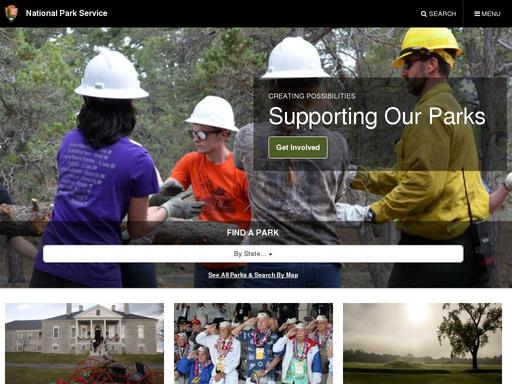Rate Mojave National Preserve
Learn and Explore
Since 1916, the National Park Service has been entrusted with the care of our national parks. With the help of volunteers and partners, we safeguard these special places and share their stories with more than 275 million visitors every year. But our work doesn’t stop there.
We are proud that tribes, local governments, nonprofit organizations, businesses, and individual citizens ask for our help in revitalizing their communities, preserving local history, celebrating local heritage, and creating close to home opportunities for kids and families to get outside, be active, and have fun.
Taking care of the national parks and helping Americans take care of their communities is a job we love, and we need—and welcome—your help and support.
Our Mission
The National Park Service preserves unimpaired the natural and cultural resources and values of the National Park System for the enjoyment, education, and inspiration of this and future generations. The Park Service cooperates with partners to extend the benefits of natural and cultural resource conservation and outdoor recreation throughout this country and the world.
Frequently Asked Questions
How do I obtain a park entrance pass?
Only 118 of your 417 park sites charge entrance fees. You can obtain park entrance passes by visiting a park site that charges an entrance fee. Entrance fee sites have passes available; we recommend calling a park prior to your visit. (See the park search to locate a specific park.) There are a number of entrance passes available, including park-specific passes as well as passes that offer entrance to more than 2,000 federal recreation sites in addition to the national parks (Annual, Military, Senior, 4th Grade, Access, and Volunteer passes). Learn more about the America the Beautiful – The National Parks and Federal Recreational Lands Pass.
About this location:
National Preserve
Operating Hours & Seasons
Park Operating Hours
Mojave National Preserve is always open.
Standard Hours
- Sunday:Open 24 hours
- Monday:Open 24 hours
- Tuesday:Open 24 hours
- Wednesday:Open 24 hours
- Thursday:Open 24 hours
- Friday:Open 24 hours
- Saturday:Open 24 hours
Fees & Passes
Entrance Fees:
- $0.00 – Mojave Entrance Fee
Mojave National Preserve does not charge a fee to enter the park
Entrance Passes:
- $0.00 – Mojave Park Pass
Mojave does not charge a fee to enter the park
About
Desert solitude in Southern California
Singing sand dunes, volcanic cinder cones, Joshua tree forests, and carpets of wildflowers are all found at this 1.6 million acre park. A visit to its canyons, mountains and mesas will reveal long-abandoned mines, homesteads, and rock-walled military outposts. Located between Los Angeles and Las Vegas, Mojave provides serenity and solitude from major metropolitan areas.
Directions
Park headquarters in Barstow, California is 60 miles from the Preserve, and offers maps, a bookstore and information. Our main visitor center, Kelso Depot, is located inside the Preserve, 95 miles north of Barstow, and 90 miles south of Las Vegas, at the intersection of Kelso-Cima and Kelbaker Roads.
Visitor Centers
Kelso Depot Visitor Center
Originally opened in 1924 as a train station, Kelso Depot was renovated and reopened in 2005 as the Visitor Center for Mojave National Preserve. Former dormitory rooms contain exhibits describing the cultural and natural history of the surrounding desert. The baggage room, ticket office and two dormitory rooms have been furnished to illustrate life as it was in the depot during the first half of the twentieth century. A 20-minute orientation film is shown in the theater. Hole-in-the-Wall Visitor Center
Basic orientation, as well as a 12-minute film about the preserve. Barstow Headquarters
Basic orientation
Weather
Mojave Desert experiences change with the seasons. In winter, freezing temperatures and strong winds can be expected, with rain and snow in the mountains. With enough moisture, spring wildflowers may carpet the desert floor with vivid colors. Summers are hot, and temperatures above 100 degrees Fahrenheit are typical. In summer, adventurers head for the higher elevations such as Mid-Hills and the New York Mountains. The cooler temperatures of fall mark hunting season.







